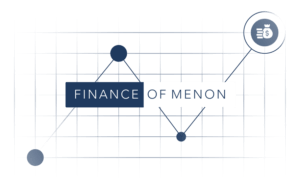The Appeal of Index Investing
Index investing has gained popularity due to its simplicity, broad market exposure, and cost-effectiveness. Low-cost S&P 500 index funds, in particular, can be a practical choice for many investors. By holding a diverse range of companies, investors benefit from the overall growth of the market without the need to select individual stocks.
This strategy helps reduce the risks associated with market timing and typically provides satisfactory long-term returns. Here’s a checklist for selecting the right index fund:
- Comprehensive: Covers a wide range of opportunities similar to actively managed funds.
- Broad-Based: Includes a diverse set of holdings.
- Liquid: Invests in easily tradable, liquid securities.
- Clear: Follows a well-defined index for predictable market behavior.
- Rational: Adheres to sound economic principles.
- Stable: Maintains low portfolio turnover.
At Finomenon Investments, we advocate for index funds and often recommend holding multiple funds across various retirement accounts, such as 401(k)s. We evaluate several key factors when selecting index funds, including expense ratios, tracking errors, and fund weighting, to ensure our clients maximize the value of their investments.
Potential Limitations of Index Funds
While index investing offers notable benefits, it also has limitations. Ken Griffin, Founder of Citadel, highlights a critical point: “Markets are efficient because of active managers setting the prices of securities.” This underscores a key difference between active and index investing. Active managers play a vital role in correcting market inefficiencies by analyzing companies and aligning their valuations with intrinsic value. This process helps ensure that market prices more accurately reflect a company’s true worth.
Market Cap Weighting and Its Impact
Index investing, especially in market-cap weighted indices, involves buying stocks at their current market prices, regardless of their intrinsic value. This approach exposes investors to inflated valuation multiples driven by market enthusiasm. When investing in an index, you’re essentially buying into the market at prevailing prices without assessing whether those prices are justified by underlying fundamentals, which can make index investing akin to “buying at any price.”
Missed Value Creation
Another drawback of index investing is the missed opportunity for value creation before a company is included in the index. Indexes are market-cap weighted, meaning the largest, most recognized companies have the most influence. Significant returns often occur before a company reaches this level of market saturation. Active managers who identify promising companies early can capture substantial gains as these companies grow and gain market recognition. By the time a company is added to an index, its price is often fully valued, leaving little room for outsized returns.
Asymmetrical Risk-Reward Opportunities
Because index constituents are already recognized and priced by the market, there is limited potential for asymmetrical risk-reward opportunities. Active managers excel at finding undervalued companies with significant growth potential and investing in them before the market fully values them. Index investors, on the other hand, invest in companies that are already discovered and fairly valued, which diminishes the potential for significant alpha.
Market Inefficiencies and Herd Behavior
Index investing can also amplify market inefficiencies. As more money flows into index funds, the prices of included stocks may rise, sometimes beyond their fundamental values. This can create bubbles around popular index constituents, increasing risk for index investors who are exposed to inflated valuations. Active managers, however, can adjust their portfolios to avoid or mitigate the impact of market exuberance.
The Case for Active Management
While index investing is beneficial for conservative DIY investors, it has hidden opportunity costs and constraints that sophisticated investors should consider. By missing out on value creation before a company joins an index, investors may forgo significant returns. Active management, which focuses on identifying undervalued opportunities and navigating market inefficiencies, remains essential for those seeking to achieve alpha and manage risk effectively.
Alpha Creation and Competitive Advantage
Markets are rarely perfectly efficient, and investor sentiment can swing dramatically. Alpha creation is challenging but possible. Identifying businesses with a competitive advantage or “moat”—such as being a low-cost producer, having a strong brand, or unique technology—can potentially lead to returns that exceed the market average. Investing in such businesses when they are undervalued can help generate alpha.
At Finomenon Investments, we allocate capital prudently, considering anticipated cash flow needs, goals, time horizons, and individual risk tolerance. Consulting with a fiduciary financial advisor can help you evaluate your risk profile and goals.
Disclaimer: This content is not investment advice. All investments carry risks, including the potential loss of principal and fluctuations in value. Finomenon Investments LLC cannot guarantee future financial results.
Image Credit: Images used are not created by Finomenon Investments, please share the source and author of the illustrator if you know to help give them credit.





